The best way to cook a blue crab can be a contentious question—the answer probably depends on where you spend the most time on the coast
Maryland-Style Steamed Blue Crab
15 Min
Prep Time
15 Min
Cook Time
Easy
Difficulty
Steamed versus boiled: What’s the best way to cook a blue crab? On the surface, that seems like a pretty simple question. Is there really a lot of difference in the finished product? Proponents of each method will tell you absolutely. And then they will likely explain why theirs is best.
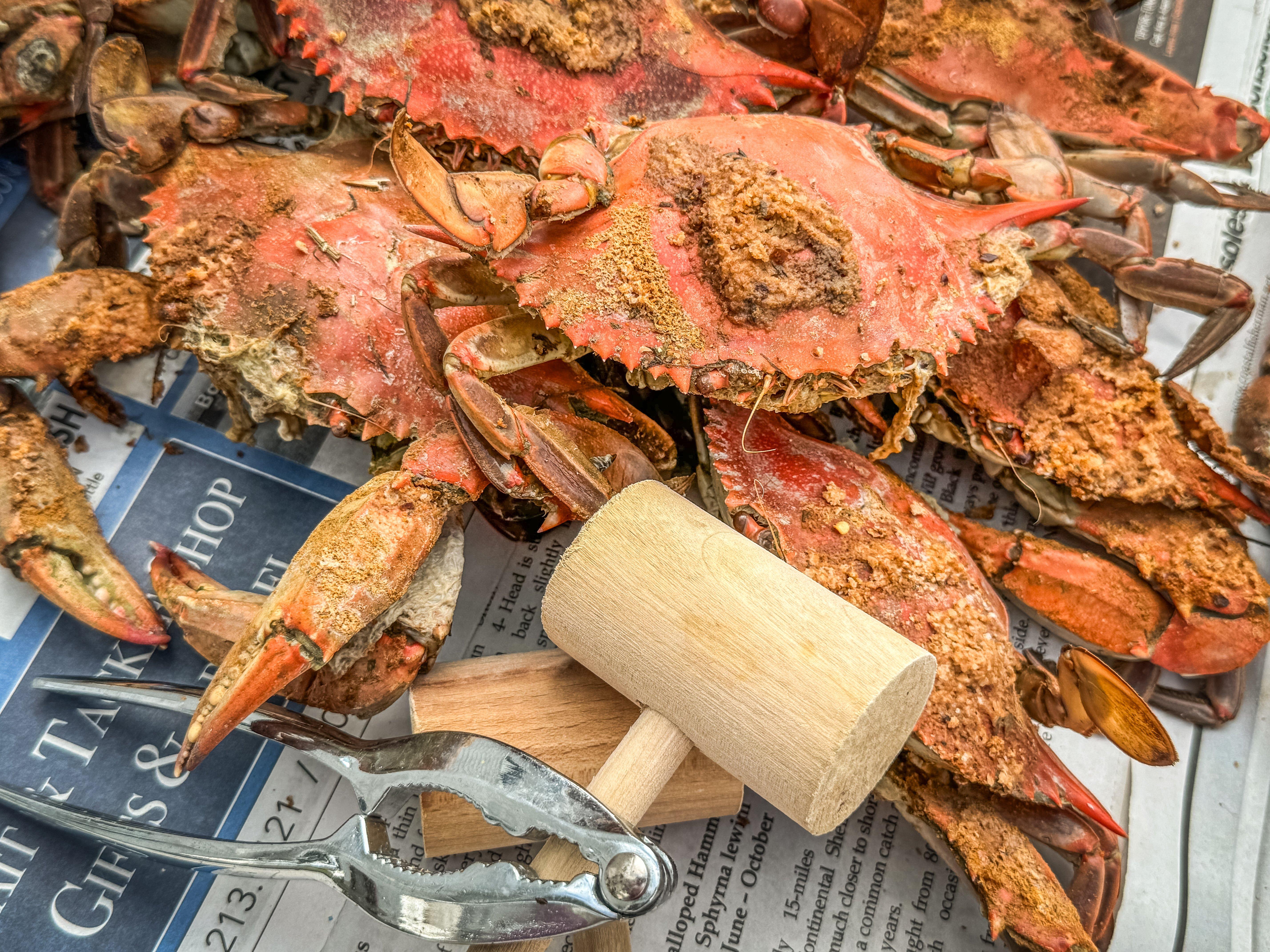
If you plan to eat blue crabs around Maryland or along the Eastern Seaboard, chances are good they’ll be steamed.
Along the Southern coast, from Georgia down and around the Gulf to Texas, blue crabs are most often boiled in a spicy blend of water and seasonings, often with potatoes, corn, and sausage. Move up to Maryland’s Eastern Shore, and you’ll hear steamed is the only way to go. I’ve done both, as well as grilled a few, and they are all good. But the finished product is most definitely different.
Each method has its own pros and cons. When it comes to boiled, the seasoning works its way deep into the meat. That can be a good or a bad thing, depending on how much spice you enjoy. Team Steam will say that the soaked-in seasoning overpowers the crabs’ sweet and delicate flavor. It’s easier to overcook crabs by boiling as well, resulting in mushy meat.
Eastern Shore folks, especially Maryland crabbers, insist that steaming lets the flavor of the crab shine through. Steamed crab gets seasoned on the outside, and that seasoning works its way to the meat as you pick the crab.
When it comes to seasoning, many, especially along the upper Eastern Shore, enjoy the Old Bay brand. But down in Maryland, there’s a local brand that’s a favorite. James Ozzle Strigle and his wife, Dot, started J.O. Spice Company in 1945 when they began making seasoning blends and selling them directly to Baltimore fishermen and restaurants. The spicy blend was a hit and today the company sells hundreds of products all over the world. Their two most popular spice blends are J.O. No. 1 and No. 2. I prefer the No. 2 for steaming straight crabs without any other ingredients.

J.O. seasoning is a Maryland seafood staple.
You can catch blue crabs in a number of ways. You can drop a baited wire or net trap off a dock or shoreline, you can tie a piece of chicken to a string and lower it into the water for a crab to grab hold, then gently scoop it up with a net just before it turns loose its prize, or, if you are around the crab capital of Maryland, Smith Island, you simply mention at the docks that you would like some fresh crab and a lifelong crabber like Lee Smith will show up at your door the next morning with a basketful.
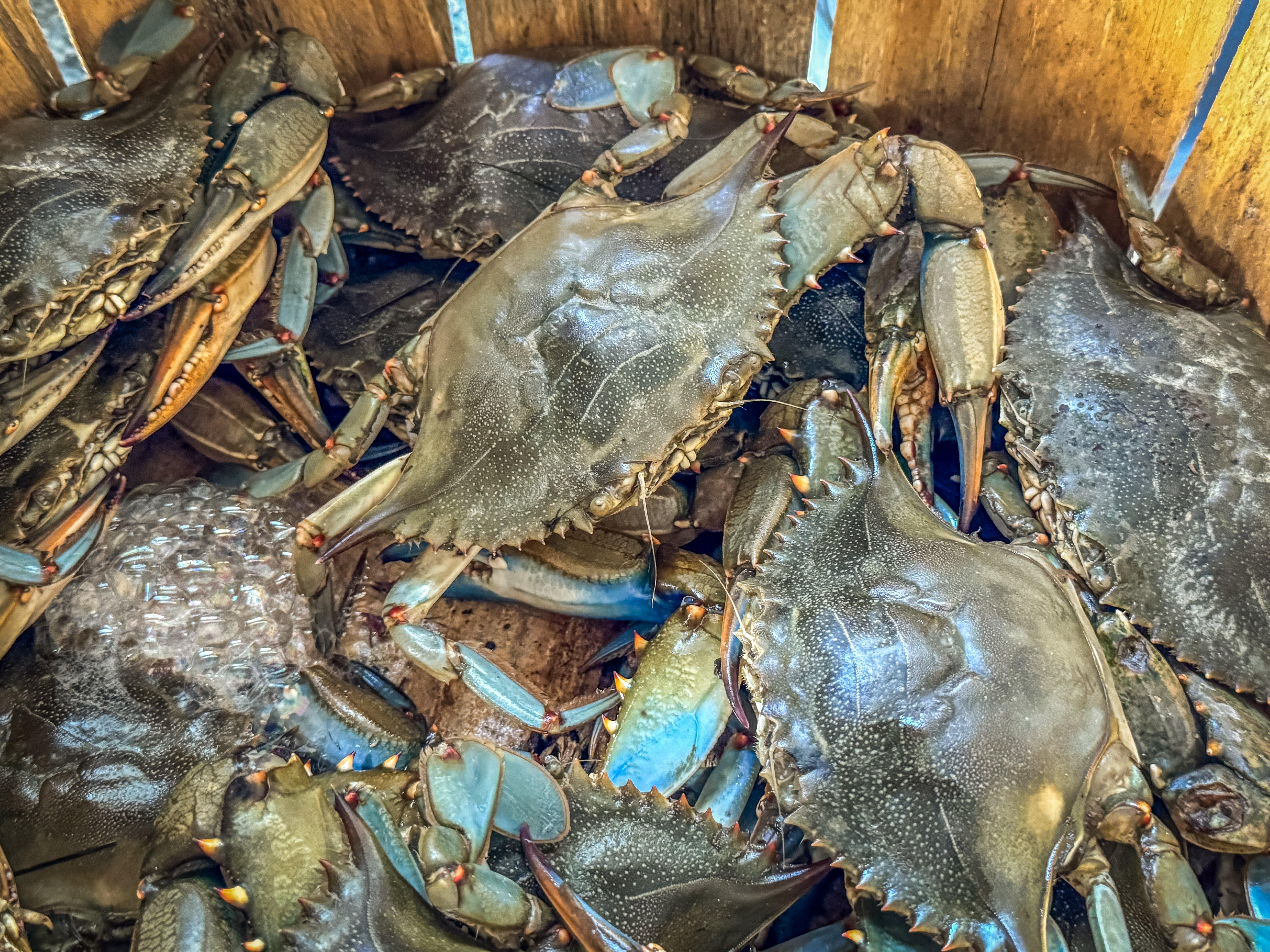
You can catch your own blue crabs, or pick up a basket from a crabber at the dock.
However you get them, you need a bit of gear to steam crabs. First, a large pot with a lid. Next, something to hold the crabs up off the bottom of the pot and out of the liquid. A folding steam basket is made for the task. If you don’t have one, simply roll up some snakes of aluminum foil and coil them in the bottom of your pot. That’s about it.
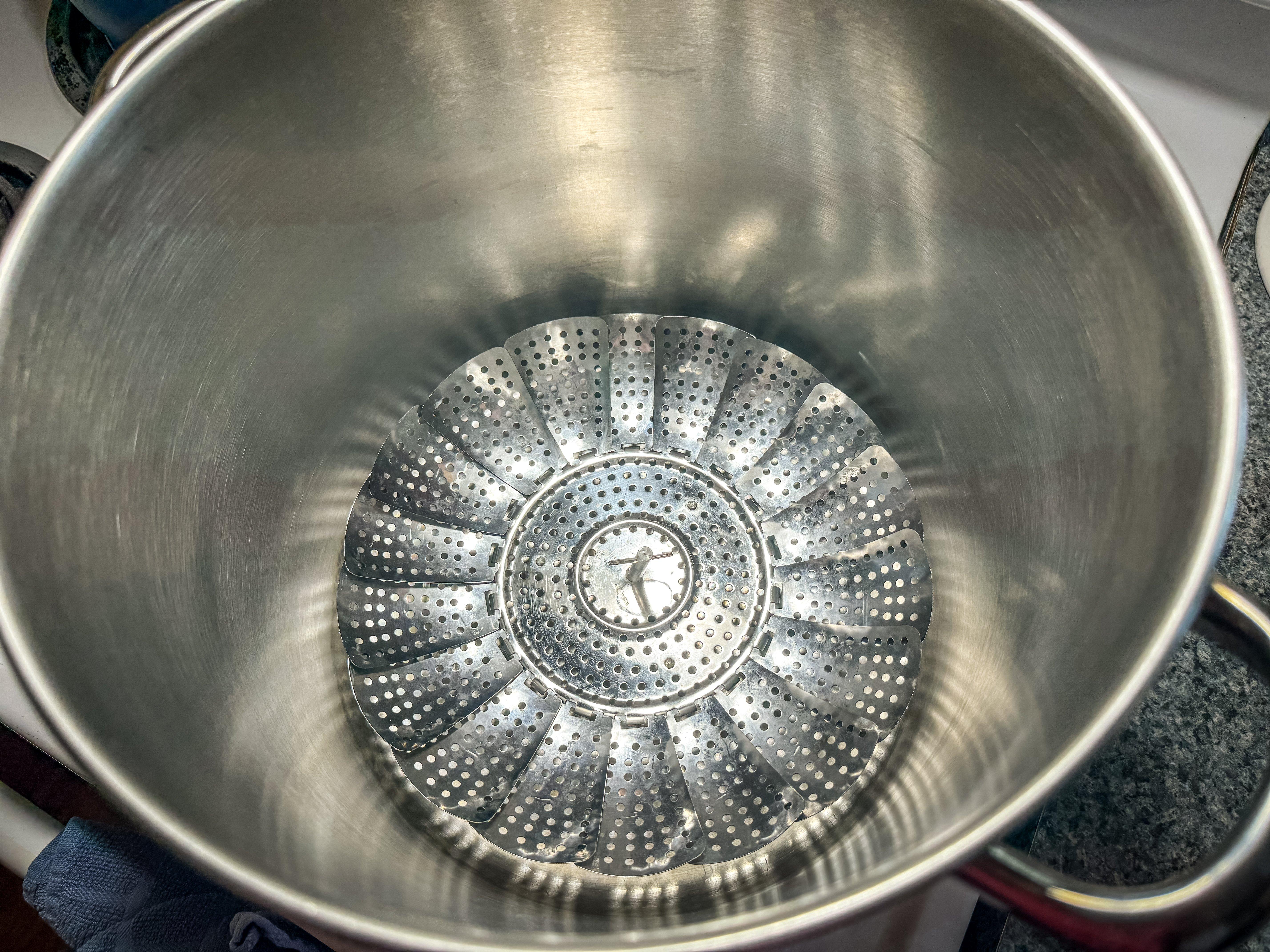
A steaming basket or some rolled-up aluminum foil in the bottom of your pot holds the crabs up out of the liquid and in the steam column.
As for the steaming liquid, you can use water, but a good pilsner beer is hard to beat. To that, add an equal amount of white vinegar. The vinegar helps soften the crab shells, making picking easier. You just need enough to make some steam—one beer or an equal amount of water plus the vinegar is usually enough. You need about an inch of total liquid in the bottom of your pot.
The method is a simple one. Add your liquid to the pot, put in a layer of fresh blue crabs (put them on ice or in the refrigerator for an hour or two before handling to minimize pinching activities), then sprinkle on some J.O. seasoning of your choice. Don’t worry about overdoing it; the bulk of the seasoning stays on the outer shell. I use a full 8-ounce bag per dozen crabs. Add another layer of crab, some more seasoning, and so on until the pot is full. Place the lid on the pot and put it on a medium-high burner.
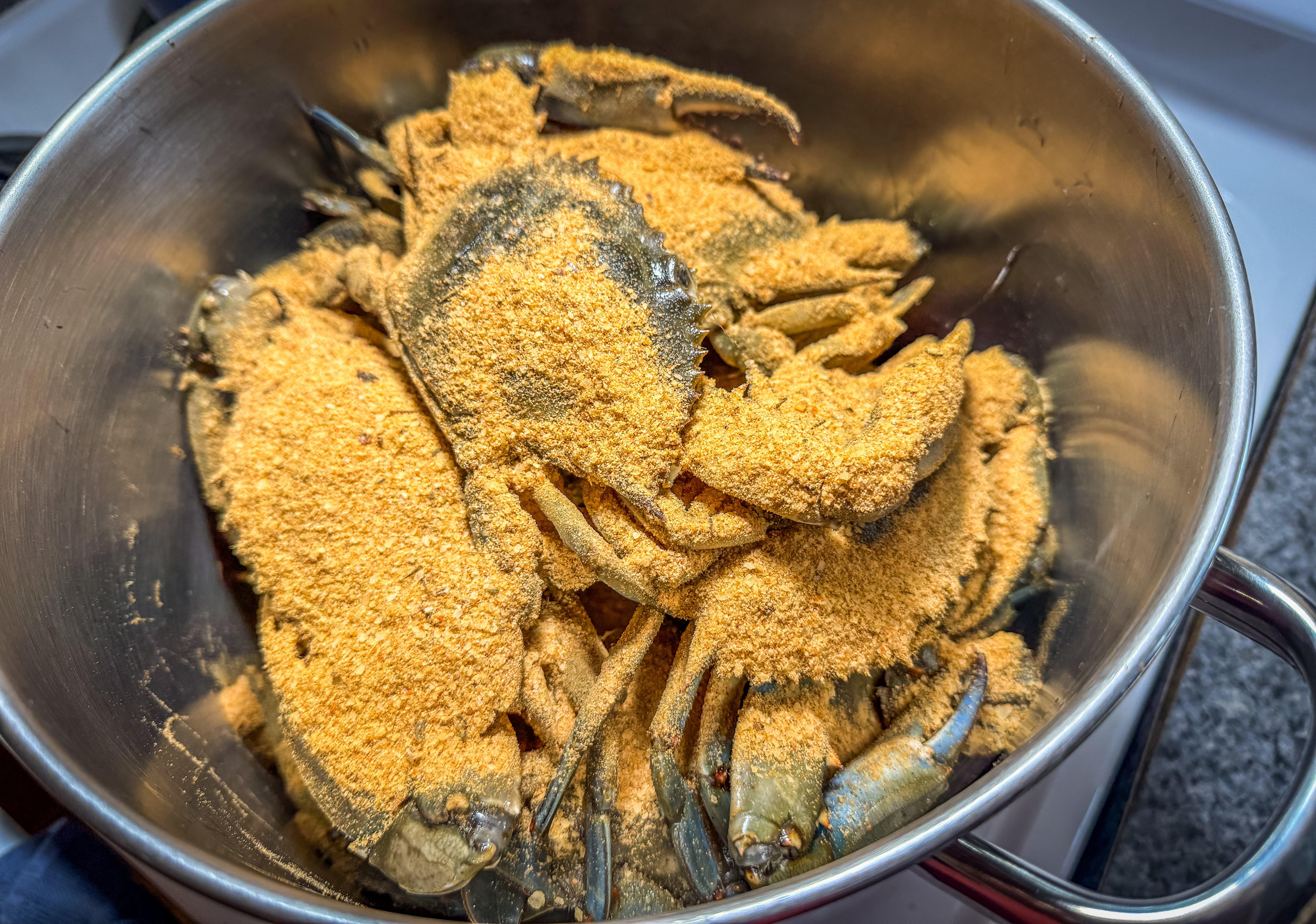
Layer crab and seasoning in the pot.
Once the liquid starts to boil and make steam, leave the lid closed for 8 to 12 minutes. Smaller crabs need about 8 minutes, large or jumbos go for 12. The shells will turn bright red as the crabs steam.
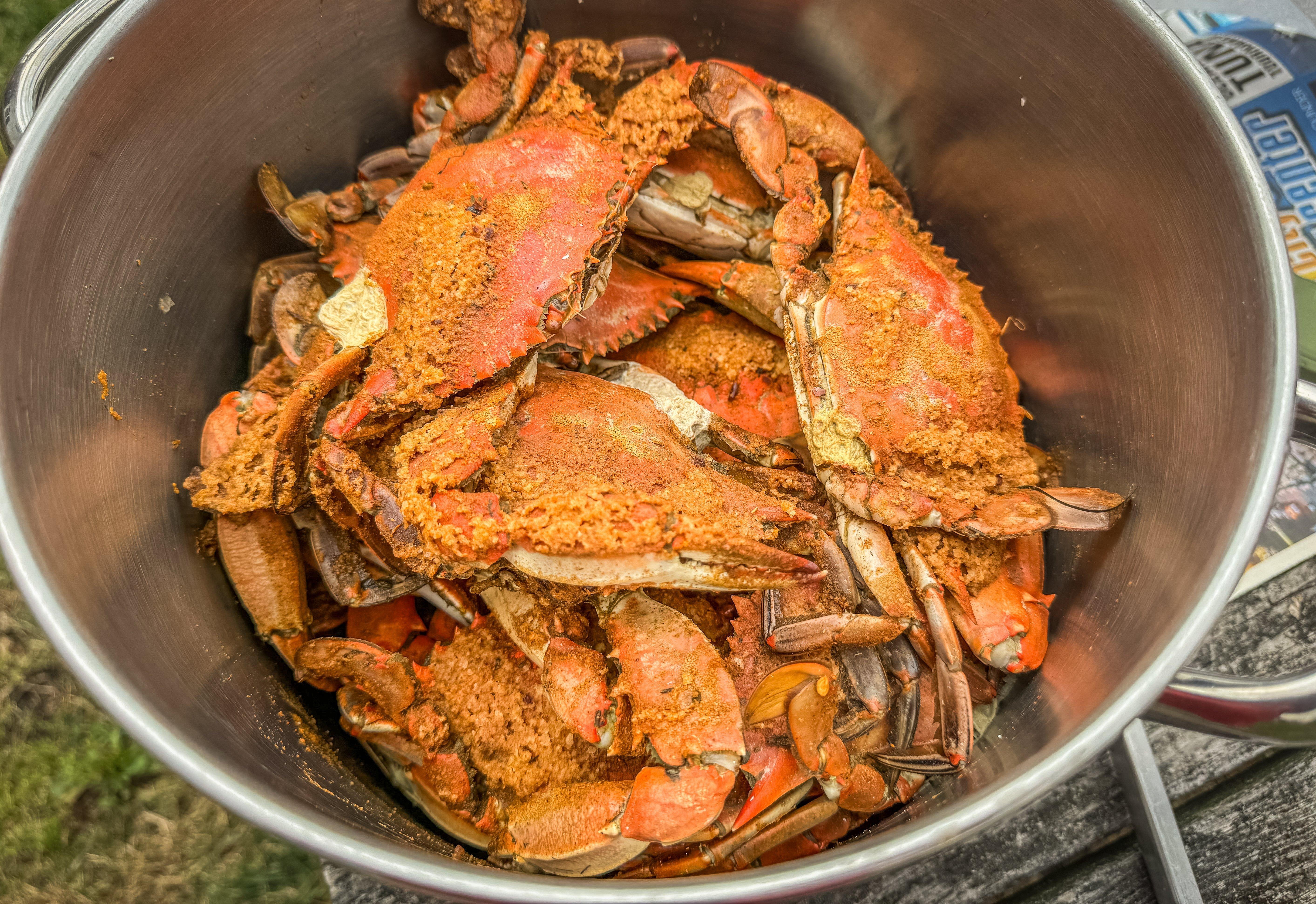
The shells will turn bright red once the crabs are steamed.
So how do you eat a steamed crab? With your hands, the way nature intended. You can use a few tools like a crab mallet or crab cracker for the hard claws, but everything else can be done with your fingers.
Start by tearing off the claws and legs. There’s meat to be had in those, so don’t toss them out. Use a claw to get under the hard back shell and lift it off. You can use your thumbnail for this task, but if you eat as many crabs as I do at a sitting, you’ll have a sore thumb for a few days. The claw is a handy tool for the task.
Next, use your fingers to brush away the gills. Everything else is edible. The yellow “mustard” inside the body of the crab is delicious, but it is an acquired taste. You don’t have to eat it if you don’t want. Break the crab in half. The bulk of the meat lies just inside where the claws and legs attach. Simply peel away the shell to get to it. Next, crack the heavy claws and extract the meat. Finally, finish up the larger sections of leg. I often break these sections, then suck the meat out sort of like using a straw.
A blue crab isn’t overly blessed with edible meat, so cook plenty. I like at least a dozen large for every two dinner guests.
Ingredients
6-8 blue crabs per guest
12 ounces beer or water
12 ounces white vinegar
J.O. No. 2 Crab Seasoning








